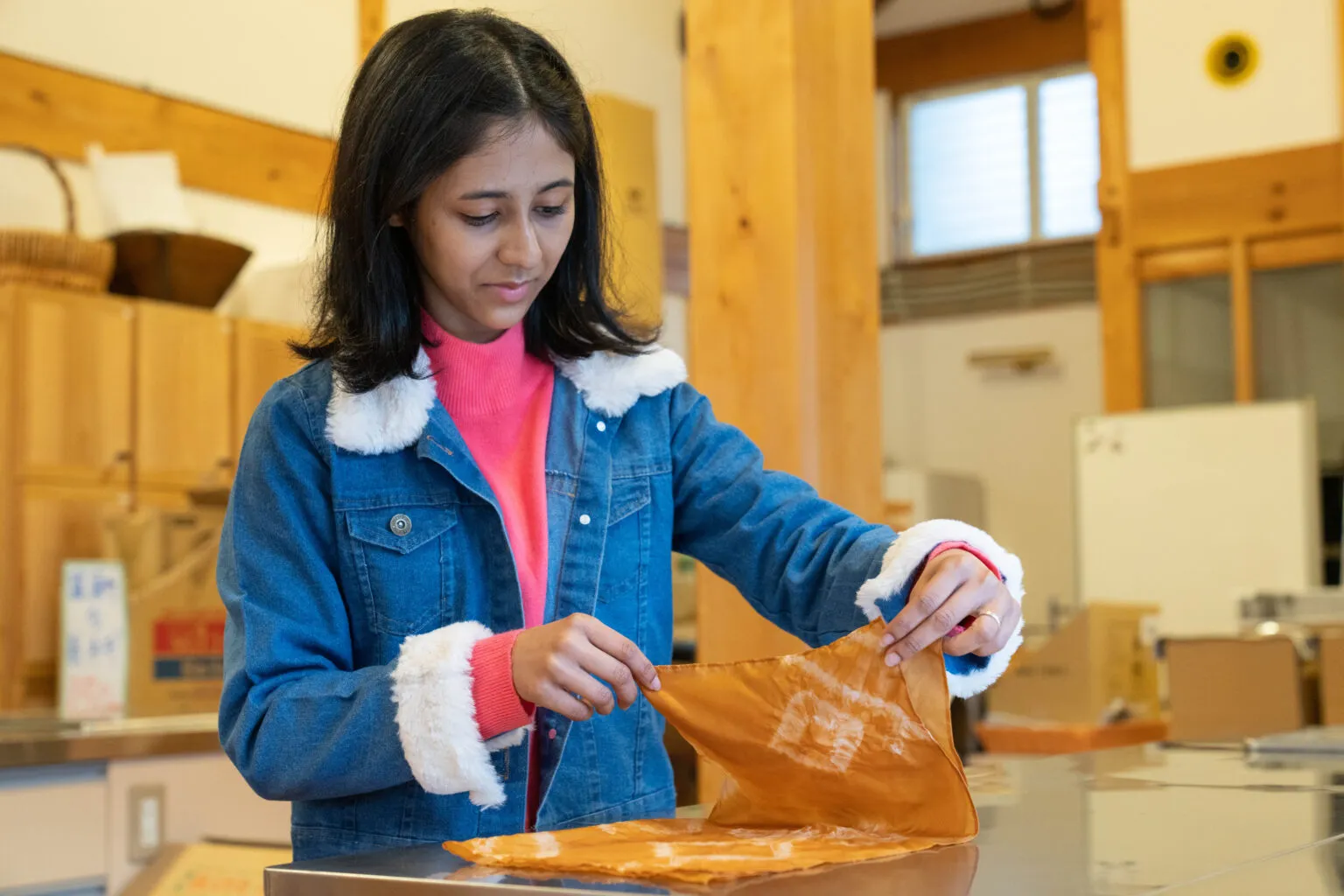
Things to Do | Visit Chiba | Latest update:2025/02/14
Minamiboso City in southern Chiba is home to a nifty little fruit that usually flies under the radar when compared to strawberries, grapes, and the many varieties of oranges here. The biwa, or loquat, in English, is a small, fleshy, orange-colored fruit with a sweet yet slightly tangy taste. While of course enjoyed on its own, dried, or in a juice, the true wonders of this fruit lie in its many applications as a natural sweetener in cooking and cakes, and even as an ingredient in many products such as creams and soaps. At the “Biwa Club” Roadside Station here off the expressway in Minami Boso, they’re always pushing the envelope to find more tasty and useful applications for this bountiful fruit, and they’ve even devised a way to use it in an interactive craft workshop here called Hazome, or “leaf dyeing,” which involves the gradual boiling of large quantities of biwa tree leaves until a concentrated, orange-hued dye is created. Much like “tie-dye,” you section off pieces of a cloth with a rubber band, and then soak them in this orange concoction to make your very own souvenir handkerchief!
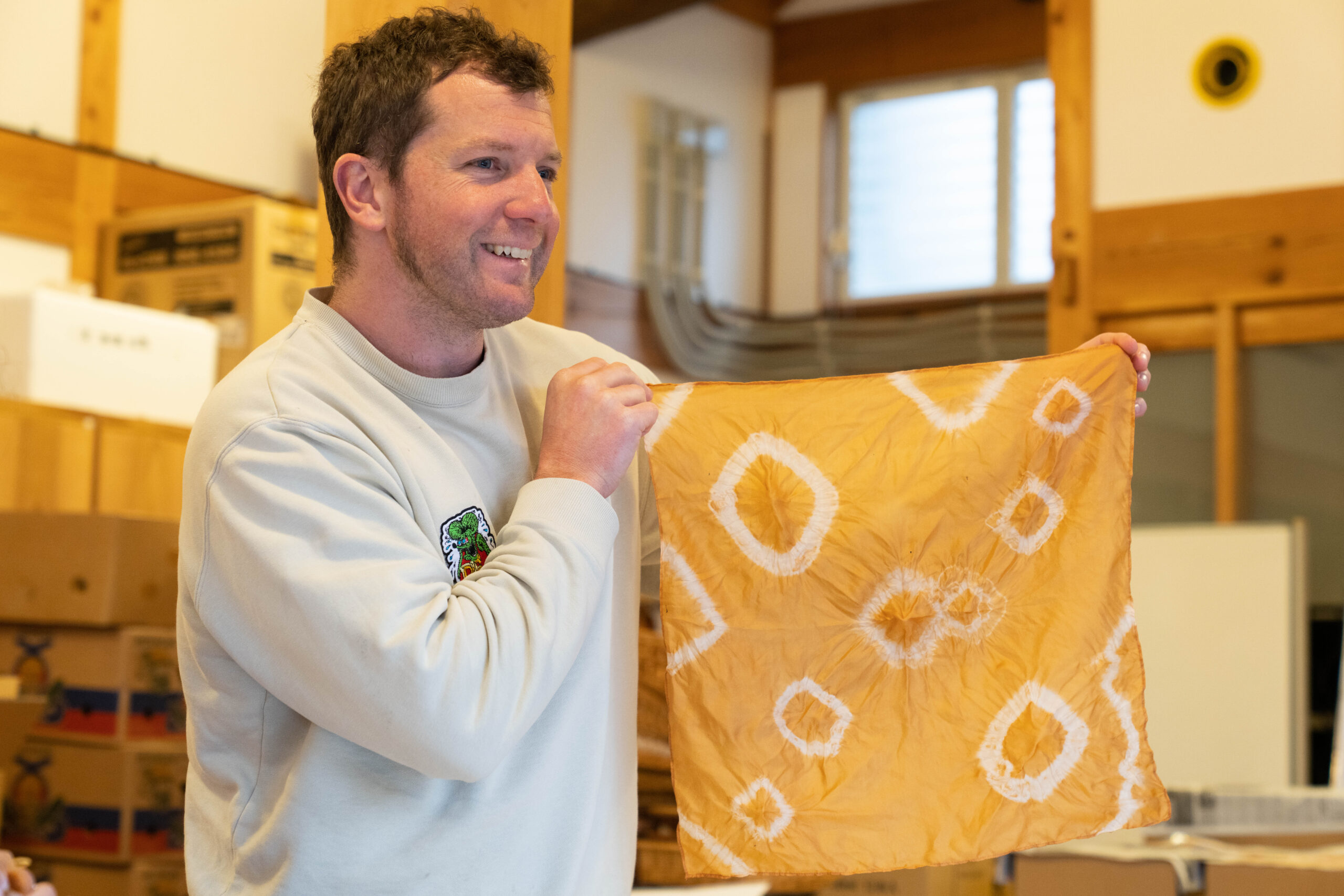
Participants are welcomed into the back area of Biwa Club for an easy workshop. Initially, you may find it hard to imagine what you will be doing, but the instructor shows participants a completed handkerchief, which makes it clear how to bind portions of the cloth to create a design. The participants are advised to use a rubber band or two or three to wrap a portion of the cloth in the middle or on the corner to make a ring that will go unstained in the dying process. Doubling up the cloth or extending the section tied off with the rubber band will have varying effects. It’s best to experiment with a vague idea rather than trying to make it perfect. The resulting design will be ultimately more unique and might even turn out better than you imagined!
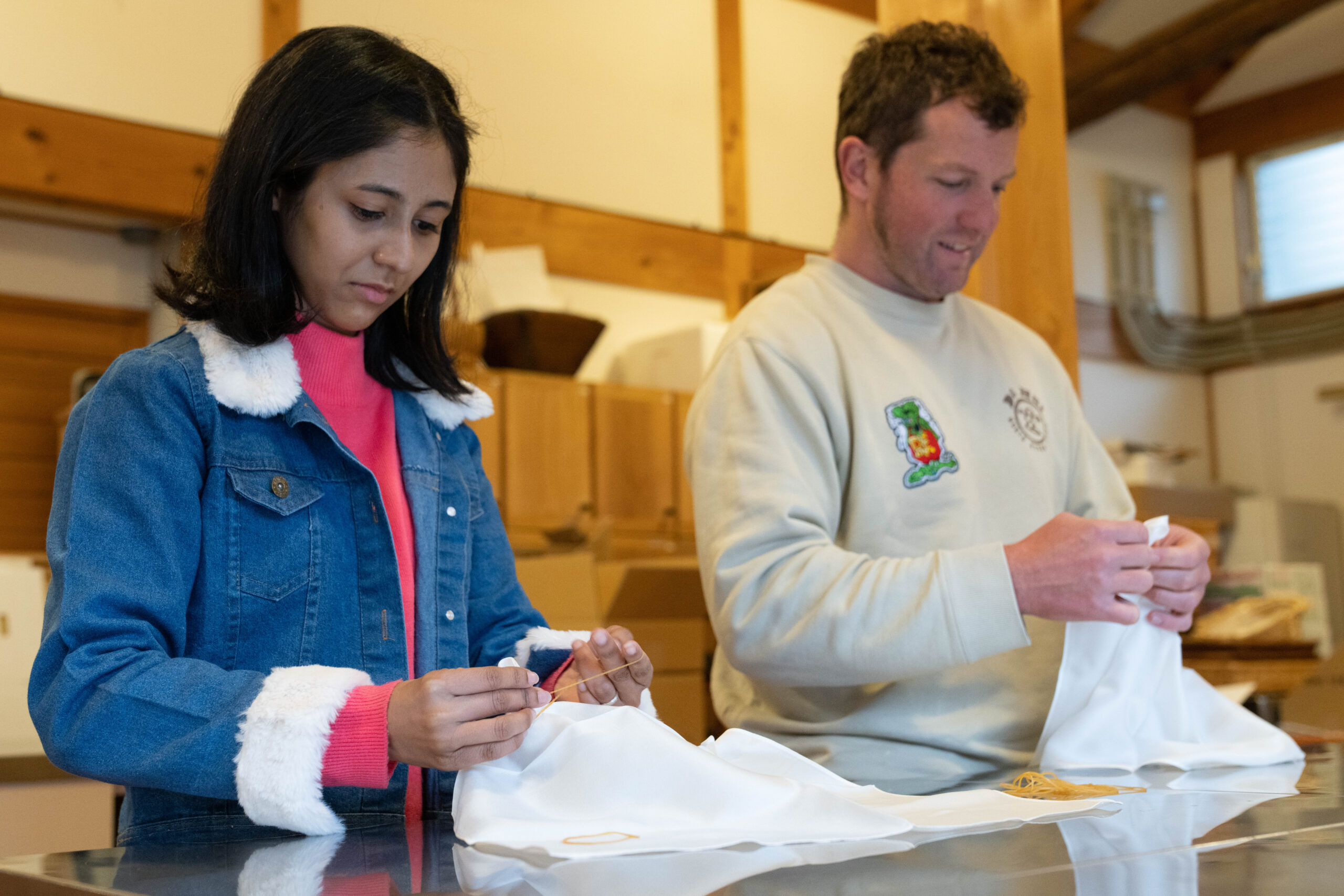
Once your “ties” are made, it’s time to dip the handkerchief in the leaf-dye. Swish it around with chopsticks for about 3 minutes, give or take, and then wring it out before letting it dry. The dyeing process is quite fast, and you don’t want to overdo it and let the dye seep into the ties you’ve made. Before you know it, you’ll have a handkerchief with a one-of-a-kind design that will take on a pleasantly vibrant orange color as it dries out. Once you’ve gone through the dyeing process, you’ll really understand how to create the design, and you’ll want to try again with the knowledge you gained the first time.
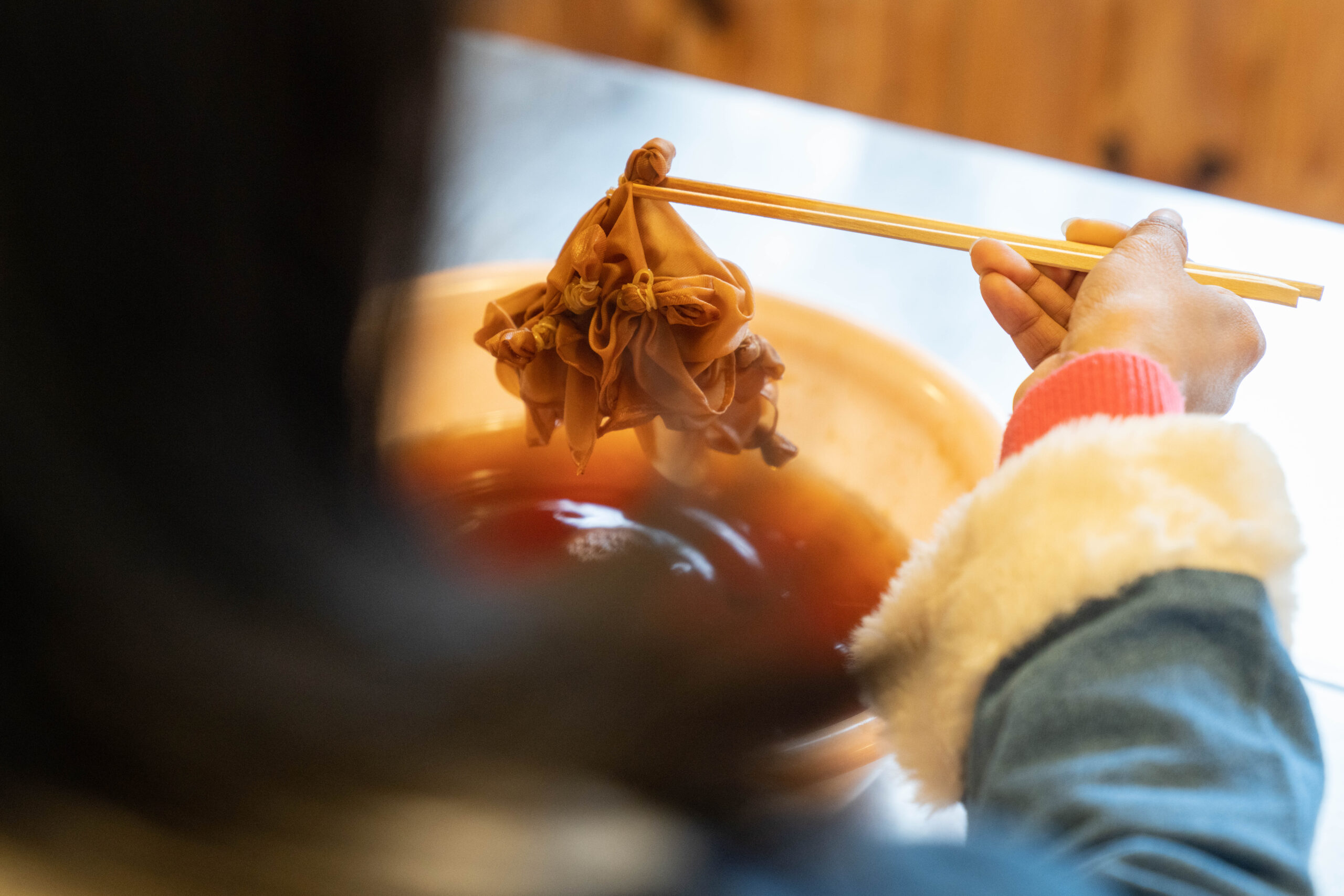
After the workshop, be sure to check out the collection of cool products displayed among the tastefully designed, cozy interior of Biwa Club. While you’ll be tempted to buy some souvenirs for the road like biwa liqueur, no one can pass up the opportunity to enjoy the fruit then and there with a small bottle of biwa juice, or a tangy yet sweet cone of soft serve biwa ice cream. We hope you become a fan of this underdog fruit, and think of it each time you pull out your custom handkerchief dyed with the biwa leaves!
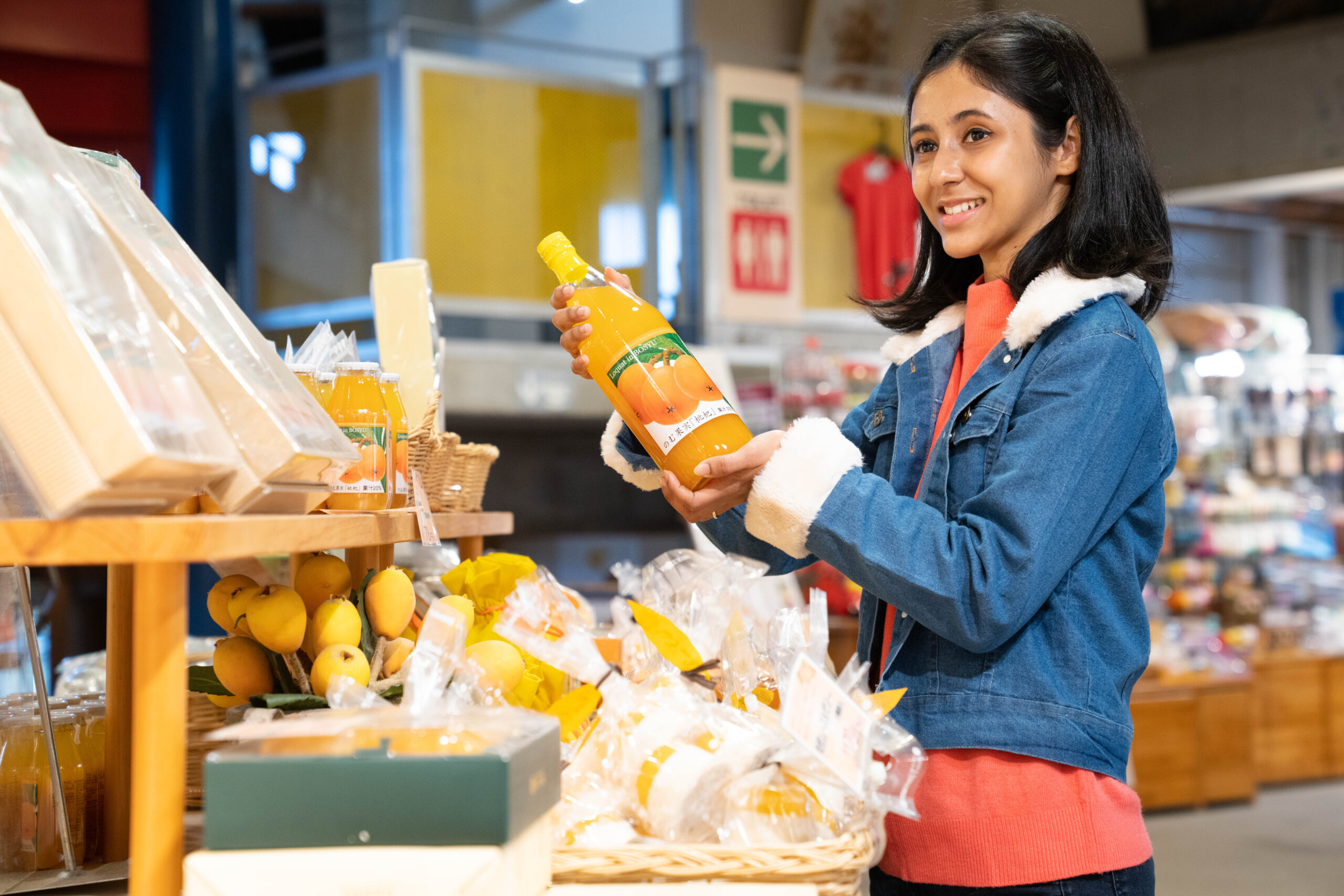
123-1 Aoki, Tomiura-cho, Minamiboso City
(A 3-minute drive from the Tomiura IC on the Tateyama Expressway. About 20 minutes on foot from JR Tomiura Station.)
+81-470-33-4611